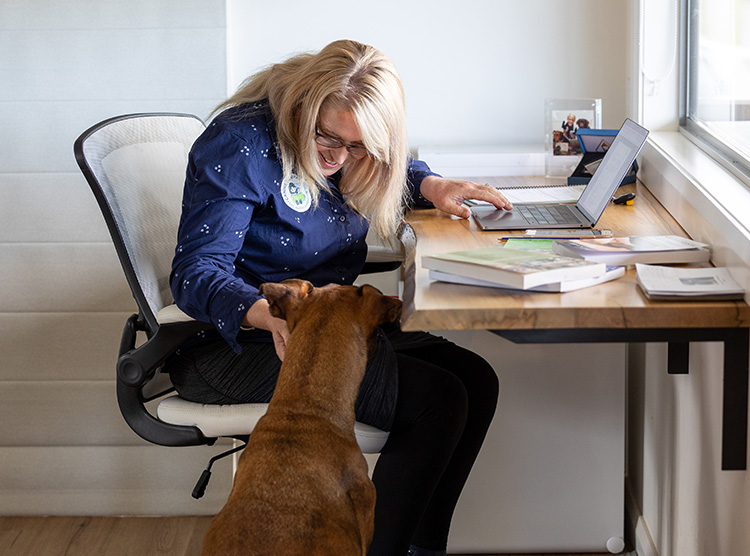
Our Blog
Almost any breed will do

Therapy dogs are becoming more widely used in Australia and around the world. However, the term therapy dog itself is often defined in a few different ways, depending on which professional you are talking to. Wikipedia gives a decent general definition: * '**A therapy dog is a dog that is trained to provide affection, comfort and support to people, often in settings such as hospitals, retirement homes, nursing homes, schools, libraries, hospices, or disaster areas. In contrast to assistance dogs, which are trained to assist specific patients with their day-to-day physical needs, therapy dogs are trained to interact with all kinds of people, not just their handlers.'* Therapy dogs live with their handler. The handler usually sees their working dog as a pet as well as a therapy dog. Handlers in Canine Comprehension are called tutors and they would strongly agree that their therapy dogs are beloved family members who are also awesome co-workers.
Getting away from definitions and terminology, what Canine Comprehension wants to achieve is a positive human-animal bond that improves the lives of our young clients. We focus on happier homes and calmer classrooms. When people ask us what breed of dog we recommend, the short answer is "any breed will do". There are many ethical dog breeders who focus on breeding therapy dog types such as the groodle, Labradoodle and Cobber Dog. These dogs have their benefits, such as medium-sized, friendly, non-shedding dogs. And although we love the Oodle mixes, we don’t discriminate - we find that it comes down to the personality and training of the individual dog and almost any breed could make a wonderful therapy dog.
A great example of ‘don’t read a book by it’s cover’ is the story of Minnie, one of the first therapy dogs who worked for Canine Comprehension. Minnie is a Doberman Ridgeback Cross. Now, this mix is not what usually comes to mind when people think of a therapy dog. However, her sensitive personality helped make her a therapy dog who was intuned with the emotions of a group of people. Minnie could ‘read the room’ and go to the person who needed her most. It was as if she has a sixth sense for seeking the emotionally vulnerable and calmly standing by them. Minnie started her life as a rescue dog who feared new situations and new people. However, with socialisation, training, and encouragement, Minnie learnt to trust people and enjoy what new situations had to offer her. Due to Minnie’s sensitivities, she was very aware of people's emotions, body language and intentions. This allowed her handler to talk to students about how we can make Minnie feel safe, about the obstacles she has overcome, and how we encourage her to enjoy learning new things. She was focused on encouragement, confidence, and trust, which is what Canine Comprehension is all about.
Surprisingly, another aspect of Minnie that made her a wonderful therapy dog was her size. Minnie was tall enough to stand still and have a group of up to 10 students pat her. She was big enough to have children move around her, and not trip on her as she is easy enough to see. She was also a perfect height to stand next to wheelchairs and work with children with mobility limitations. Minnie is happily retired now, spending her days helping Sarah in the office, playing with the other dogs on Sarah's farm or stealing the best spot on the sofa. Unfortunately, they all get old, eventually. She is still happy and healthy, just slower to move off the couch and a little hard of hearing.
So when people ask me ‘what breed you recommend?’, I say it’s not about the dog breed, it is about the personality of the individual dog. Do they like people? Are they interested in children? Are they offering opportunities for greater connection and value? If the answer is yes, then we might have a therapy dog in the making. If you are interested in pursuing such a career path with your dog, feel free to check out our Pathway to Employment section on our website.
